By Steven Smith
This session will move from a warm-up that requires precision passing to tactical decision making during possession. The defenders and attackers are trained separately and will require more than on coach to run correctly and supervise the activity. A fitness activity is introduced prior to the tactics in order to train them while fatigued. The defensive tactics are centered around accurate and consistent passing among a flat four group of defenders and they are then challenged to hit a target up field with a long pass on the floor or as directed by the coach. The attackers are running various patterns in a functional front third setting that will result in shots on goal. The training session ends with full-sided play to apply the principles trained earlier in the session. The final activity does not need to be full 11’s but the flat back four group should remain intact.
Activity 1: Triangle Pass and Move
Warm-up
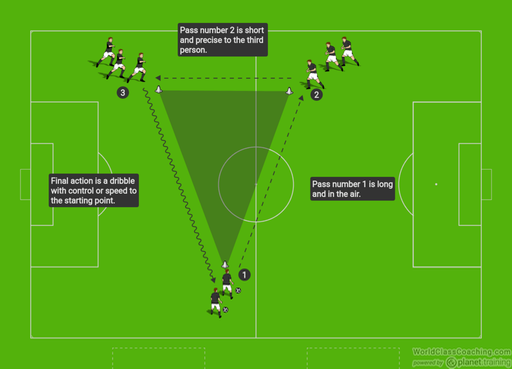
Setup:
Set up a long triangle approximately 12 yards in distance on the long end (hypotenuse) and only 6 yards at the short end as shown in the diagram.
Execution:
Place two or more people on each cone of the triangle points. The first pass is long and must be settled from chest to ground. The receiver turns and passes the ball quickly to the second cone. The third receiver then speed or control dribbles to the first starting point. With multiple players at each cone the drill should be continuous in nature and flow with speed and more than one ball.
Variations:
The first pass can be from a volley and driven.
The first pass can be on the ground or delivered in the air to the receiver.
Activity 2: 120's
Main phase
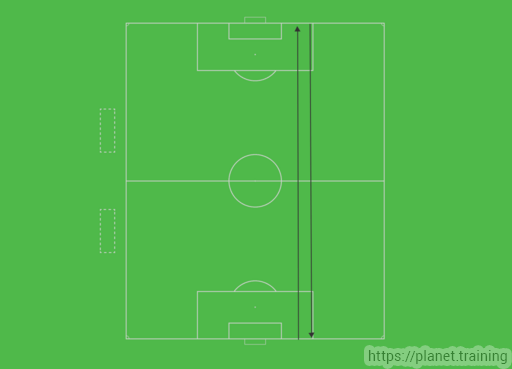
Setup:
Only need length of soccer field at 120 yards.
Execution:
Players on end line and run to the opposite end in 22 seconds. Must wait at the end until 22 and then have 38 seconds to return to the other end and repeat 10 times.
Activity 3A: Defensive Patterns (Defenders Only)
Main phase
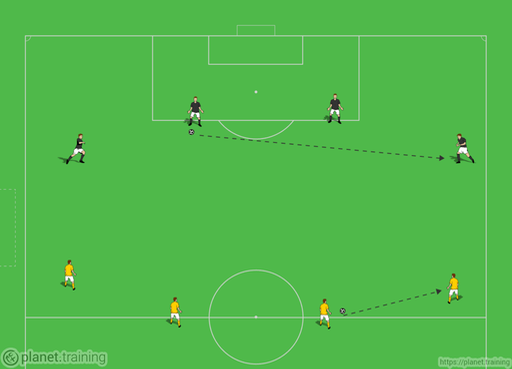
Setup:
Two lines of four defenders face each other in a 40-yard gap in functional back third.
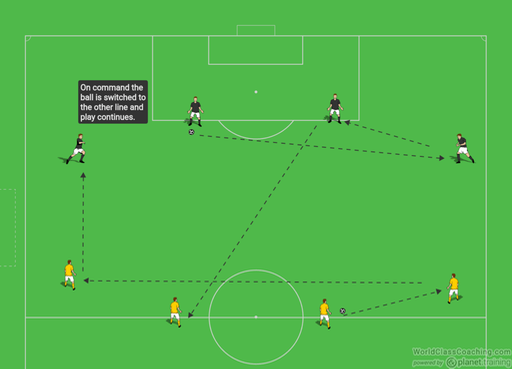
Execution:
Ball is passed from members of the same line and on coaches command the ball is passed to the other line.
Variations:
Have two balls going and number the players by position. Coach calls pass to player number and on whistle the ball is moved to the opposite line.
Comment
Run this on one end and shooting patterns at the other end.
Activity 3B: Shooting Patterns
Main phase
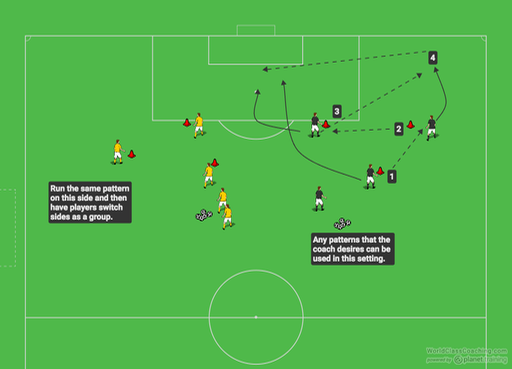
Setup:
Functional patterns are set up as shown in the diagram. Coach selects various passing sequences before the shot takes place.
Execution:
Passing patterns are run with speed and precision with flank services coming from outside of the box.
Activity 4: 8 vs. 5 Functional Training
Main phase
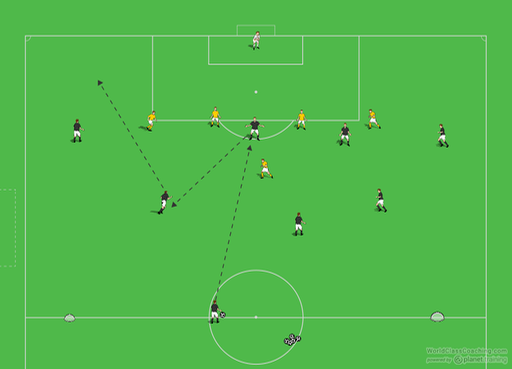
Setup:
A half field is used with players setting up in defensive shape with a group of five players as shown in the diagram. Eight attackers in the coach's preferred shape settle into the field.
Execution:
Play is started by the coach or other server starting the ball play to the attacking group. Depending on the emphasis of attack or defense, the ball will be started in various portions of the group of attackers. For attacking principles, all play will begin at the midfield stripe and the ball can be forced to certain players and play continues from there. For defensive principles and practice, the ball can be started by the keeper and only rolled out to various defensive players to keep possession and work the ball back to the midfield stripe under control. Counter attack goals can be set at the midfield stripe on the flanks.
Activity 5: Full sided play
Main phase
Setup:
Groups of 11 vs. 11
Execution:
Full field. Coaches randomly end play with whistle and start a new ball where the coach desires to work on functional play.
Variations:
Comment
As large as possible. If coach does not have 22 players then use the full numbers possible.
By Steven Smith Head Coach at Hope College, Holland, MI


